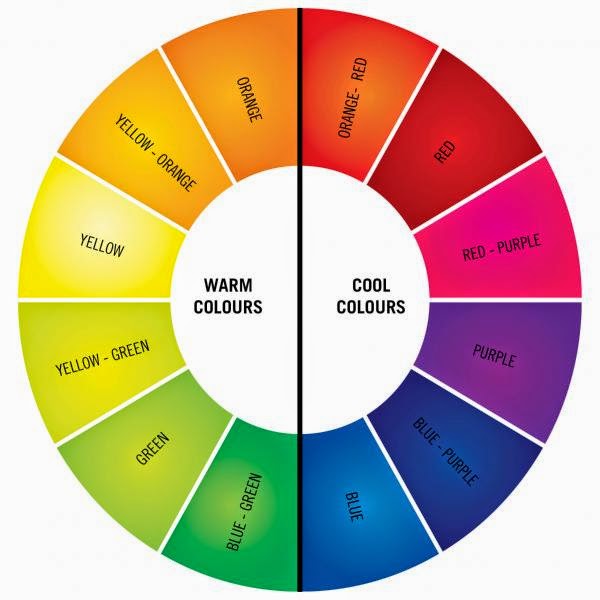
Los colores primarios son el magenta, el amarillo y el azul cian, a partir de los cuales se forman los demás. Si mezclamos colores primarios a partes iguales obtenemos los secundarios: naranja, verde y violeta. Los colores terciarios, que aparecen entre los primarios y los secundarios en la rueda, se obtienen mezclando colores secundarios. Los colores primarios imprimen mucha vitalidad a la labor y los colores terciarios en cambio transmiten un efecto más sutil.
Los colores complementarios son los que aparecen enfrentados en la rueda. Las combinaciones cromáticas más “seguras” son las formadas por tres colores adyacentes y uno complementario, que aporta contraste.

Los colores cálidos son los que se asocian con el fuego y los fríos los asociados con el agua. Alternando colores cálidos y fríos se crea un efecto más llamativo. También existen los colores neutros, que no aparecen en la rueda cromática. Son el negro, el gris, el blanco y algunos beiges y marrones. No son colores dominantes y se pueden mezclar o intercalar entre ellos. Se utilizan a menudo como fondo.

En principio, podemos conseguir armonía de tres formas:
- Utilizando colores adyacentes o similares.
- Utilizando colores complementarios.
- Utilizando colores de la naturaleza.
- Using adjacent or similar color.
- Using complementary colors.
- Using colors of nature.


Un comentario
Gracias por compartirlo.
Saludos Juani Arbelo